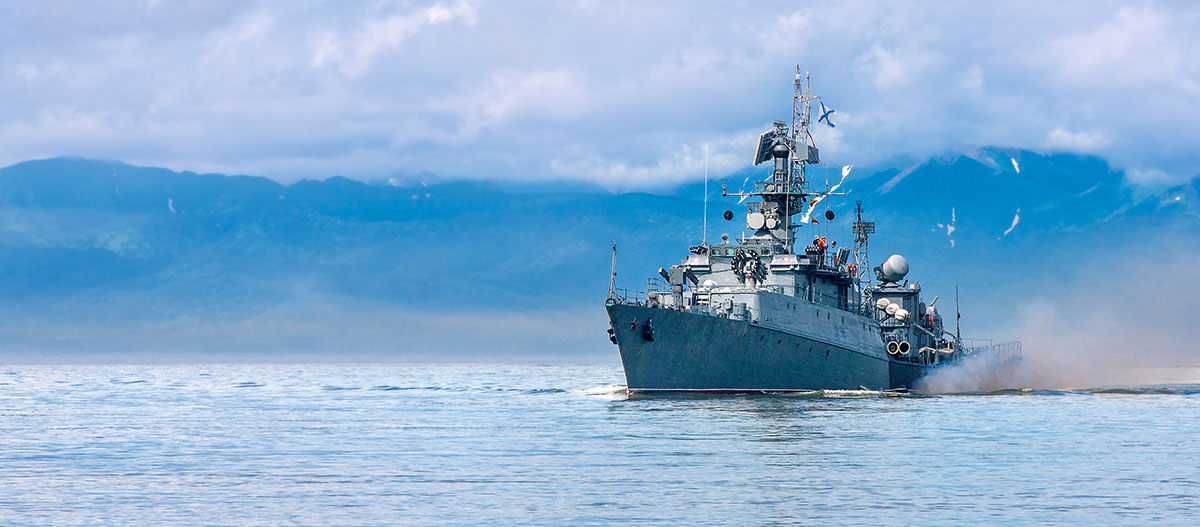Increased aggression from Beijing has sparked more robust responses from Washington and the regional claimant states.

China’s South China Sea gambit is heading toward a rocky phase, the warning signs of which were witnessed on July 13 when U.S. Secretary of State Mike Pompeo formally rejected China’s “historical rights” claims in the South China Sea. Terming the Chinese policy completely unlawful, he added that the international community will not allow Beijing “to treat the South China Sea as its maritime empire.”
Pompeo touched the right chord with Southeast Asian claimant countries in stating that China has failed to provide any credible legal basis for its expansive South China Sea claims, manifested in the nine-dash line. This is also one of the rare occasions when the United States explicitly called for respecting the 2016 ruling of the Hague-based Permanent Court of Arbitration, which found in the Philippines’ favor in its filing against China’s claims.
Pompeo’s statement supporting the Philippines and highlighting the salience of international laws is rather intriguing as the United States itself is not a signatory to the 1982 UNCLOS (United Nations Convention on the Law of the Seas) agreement.
The U.S. move did not come in a vacuum. Just a day before Pompeo’s statement, the Philippines’ Foreign Affairs Secretary Teodoro Locsin said Manila believes that the 2016 arbitral tribunal’s ruling on the South China Sea dispute is non-negotiable, and Manila will make no compromises on its claims in those disputed waters.
Locsin’s statement appears to be in contradiction with President Rodrigo Duterte’s pro-China stance. Duterte himself had indicted in the past that his government would not want to pursue the 2016 Permanent Court of Arbitration’s ruling with China. The arbitration ruling was rejected as invalid by China, which had refused to take part in the proceedings or recognize the tribunal’s jurisdiction. Seemingly, the U.S. support to the Philippines is making a headway in Manila’s corridors of power, leading to a rejuvenation of ties. The recent Philippine decision to defer a threatened suspension of its defense pact with the United States testifies to a growing sense in Manila that Washington may be their best bet after all when it comes to national security.
To a certain extent, Pompeo’s and Locsin’s statements also echo the emerging collective voice of key Association of Southeast Asian Nations (ASEAN) member countries. During the 36th ASEAN summit in June 2020, the ASEAN member countries raised their concerns on the South China Sea dispute and presented a cohesive diplomatic front against China’s aggressive postures in the South China Sea. While China did promise to restart the negotiation process, weeks later the Peoples’ Liberation Army was spotted in the South China Sea conducting a military drill instead. The United States criticized China’s actions, terming it a violation of the 2002 Declaration on the Conduct of Parties in the South China Sea, as a part of which the signatories had promised to avoid activities that could escalate disputes.
In response, the United States also conducted a competing naval exercise involving two of its nuclear-powered aircraft carriers, the USS Nimitz and USS Ronald Reagan, which demonstrates how serious Washington is getting about its stand against China in the South China Sea.
The South China Sea is an ever-contentious zone, and becoming more so thanks to China’s aggressive actions. In addition to frequently harassing Vietnamese ships, China has been trespassing into Malaysian waters. As per the third series of the Auditor-General’s Report 2018, between 2016 and 2019, the Chinese military encroached as many as 89 times into Malaysia’s Sabah and Sarawak waters in the South China Sea. China is also enraging Indonesia by intruding in the waters around the Natuna Islands. So far, Indonesia’s Joko Widodo administration has firmly responded to China’s misadventures; how long it will remain guarded remains to be seen. Speculations are rife that China is intent on setting up an Air Defense Identification Zone over these waters, replicating its East China Sea model.
With the renewed U.S. support to the Philippines on the South China Sea dispute, it is clear that China’s South China Sea gambit is likely to face more challenges in times to come. Its persistently aggressive policy is unlikely to yield any tactical or strategic outcomes. However, Beijing would still try to play its age-old “divide and rule” policy with the Southeast Asian countries, offering sweet deals to some while fiercely countering those who stand up to it. How far China succeeds in such attempts would be largely shaped by the quality and extent of reassurance the United States and its friends and allies provide to the region in keeping the flock together.
Rahul Mishra is a senior lecturer at the Asia-Europe Institute, Universiti Malaya, Kuala Lumpur, Malaysia. He tweets @rahulmishr_. Article was first published at The Diplomat
Last Update: 11/11/2021